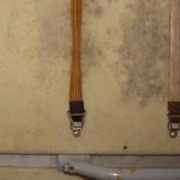14 Bend-La Pine Schools Had Leaks After Snow
Bend, Oregon – Fourteen schools with recently renovated and aging roofs suffered leaks throughout Bend for the past two weeks after a record snowfall, but all leaks were repaired by Thursday for less than $500, according to Bend-La Pine Schools.
The district first heard a leak complaint March 4, and district maintenance crews repaired each leak as soon as they heard about it, according to Dan Dummitt, Bend-La Pine Schools maintenance director. He confirmed in an email that most of these leaks are new problems, not repeat offenders from the last major Bend snowstorm in 2017.
Most of the leaks were caused by ice dams, barriers that form after heavy rooftop snow melts due to interior heat, then refreezes. This causes ice and water to back up and leak into the building.
Many schools had leaks in classrooms, according to district spokeswoman Julianne Repman. Ponderosa, Juniper and Bear Creek elementary schools each had leaks in one classroom, and Summit and Mountain View high schools had about three classrooms with dripping ceilings. The other areas with leaks were Cascade Middle School’s gym, Highland Elementary’s interior courtyard windows, Amity Creek’s principal’s office, a kitchen window at Elk Meadow Elementary, a skylight in Pacific Crest Middle School, Buckingham Elementary’s library, RE Jewell Elementary’s back entryway, Ensworth Elementary’s staff lunchroom, and the track shed at Mountain View High School.
Some of the buildings affected will have roofs replaced in the next few years with money from the district’s $268.3 million 2017 bond — Bear Creek, Amity Creek, Pilot Butte Middle School, La Pine High School and part of Mountain View’s roofs will be replaced this summer or when the weather is nice, Repman said. In 2020, Juniper and Bend High School will have roof replacements, and Kenwood and Summit’s new roofs will be completed in 2021.
However, some roofs with leaks — Cascade and Jewell — received new roofs last year. And Pacific Crest was just built in 2015. Dummitt said ice dams can cause leaks in any roof, regardless of age.
“With heavy snow and cold temperatures, ice dams affect every roof, new and old,” he wrote in an email.
According to Dummitt, when maintenance crews visited a site, they opened and dried out the portion of the celling with a leak, removed and replaced wet insulation, and leaking windows were re-caulked.
Last Thursday, Juniper fifth-grade teacher Jaime Speed posted on Facebook that the leak in her classroom had been going on for four days, and that “mildew was setting in.”
“It feels pretty unsafe,” she wrote on Facebook. “What are we breathing in there?”
Repman, Dummitt and Juniper Principal Dan Wolnick denied that any mold was found in leaking areas, including Speed’s classroom. Wolnick called the classroom “totally safe, absolutely healthy for the students,” and Repman said Speed made the only complaint she had heard about mold this winter.
Dummitt said that when insulation gets wet, it can start to smell bad and become discolored. Speed did not respond to a request for comment. Eric Mone, the Deschutes County environmental health supervisor, said no students, parents or teachers had contacted the county about mold this winter.
During the record-breaking snowstorm in late February and early March, the Bend-La Pine district was advised by a local engineer not to remove snow from its 15 buildings with flat roofs.
Written by Jackson Hogan, The Bulletin
MOLD-HELP NOTE: Mold does not grow well in low temperatures, nor do building materials dry out well. This will be a story to watch as Spring warms up everything, and provides mold with both the warmth and moisture it loves.


 NASA
NASA 




